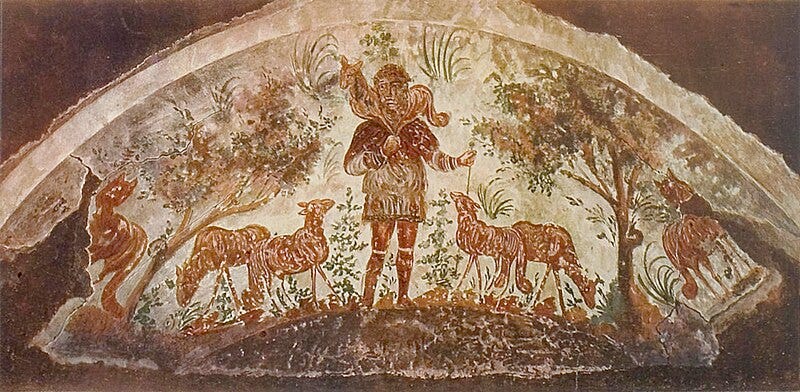
About the text: The Catechism of the Catholic Church was compiled under the direction of then Cardinal Joseph Ratzinger (later Pope Benedict XVI) to serve as a compendium of Catholic doctrine. This is one of only two catechisms prepared for the universal Church, the other having been produced in 1566. The following excerpts discuss the manner in which practices of popular piety should be undertaken and the places most suitable for prayer and pilgrimage.
—
Popular piety
1674. Besides sacramental liturgy and sacramentals, catechesis must take into account the forms of piety and popular devotions among the faithful. The religious sense of the Christian people has always found expression in various forms of piety surrounding the Church’s sacramental life, such as the veneration of relics, visits to sanctuaries, pilgrimages, processions, the stations of the cross, religious dances, the rosary, medals (cf. Nicaea II: DS 601, 603; Council of Trent: DS 1822), etc.
1675. These expressions of piety extend the liturgical life of the Church, but do not replace it. They “should be so drawn up that they harmonize with the liturgical seasons, accord with the sacred liturgy, are in some way derived from it and lead the people to it, since in fact the liturgy by its very nature is far superior to any of them” (Sacrosanctum Concilium 13§3).
1676. Pastoral discernment is needed to sustain and support popular piety and, if necessary, to purify and correct the religious sense which underlies these devotions so that the faithful may advance in knowledge of the mystery of Christ (Catechesi Tradendae 54). Their exercise is subject to the care and judgment of the bishops and to the general norms of the Church.
Places favorable for prayer
2691. The church, the house of God, is the proper place for the liturgical prayer of the parish community. It is also the privileged place for adoration of the real presence of Christ in the Blessed Sacrament. The choice of a favorable place is not a matter of indifference for true prayer.
—For personal prayer, this can be a “prayer corner” with the Sacred Scriptures and icons, in order to be there, in secret, before our Father (Mt 6:6). In a Christian family, this kind of little oratory fosters prayer in common.
—In regions where monasteries exist, the vocation of these communities is to further the participation of the faithful in the Liturgy of the Hours and to provide necessary solitude for more intense personal prayer (Perfectae Caritatis 7).
—Pilgrimages evoke our earthly journey toward heaven and are traditionally very special occasions for renewal in prayer. For pilgrims seeking living water, shrines are special places for living the forms of Christian prayer “in Church.”
—
Excerpts from the Catechism of the Catholic Church © Amministrazione del Patrimonio della Santa Apostolica and © Libreria Editrice Vaticana – 00120 Città del Vaticano. All rights reserved. International copyright handled by Libreria Editrice Vaticana; © Concacan Inc., 1994, 1997, 2016 for the English translation in Canada. All rights reserved. Reproduced with permission of the Canadian Conference of Catholic Bishops. Visit cccbpublications.ca.

Leave a Reply